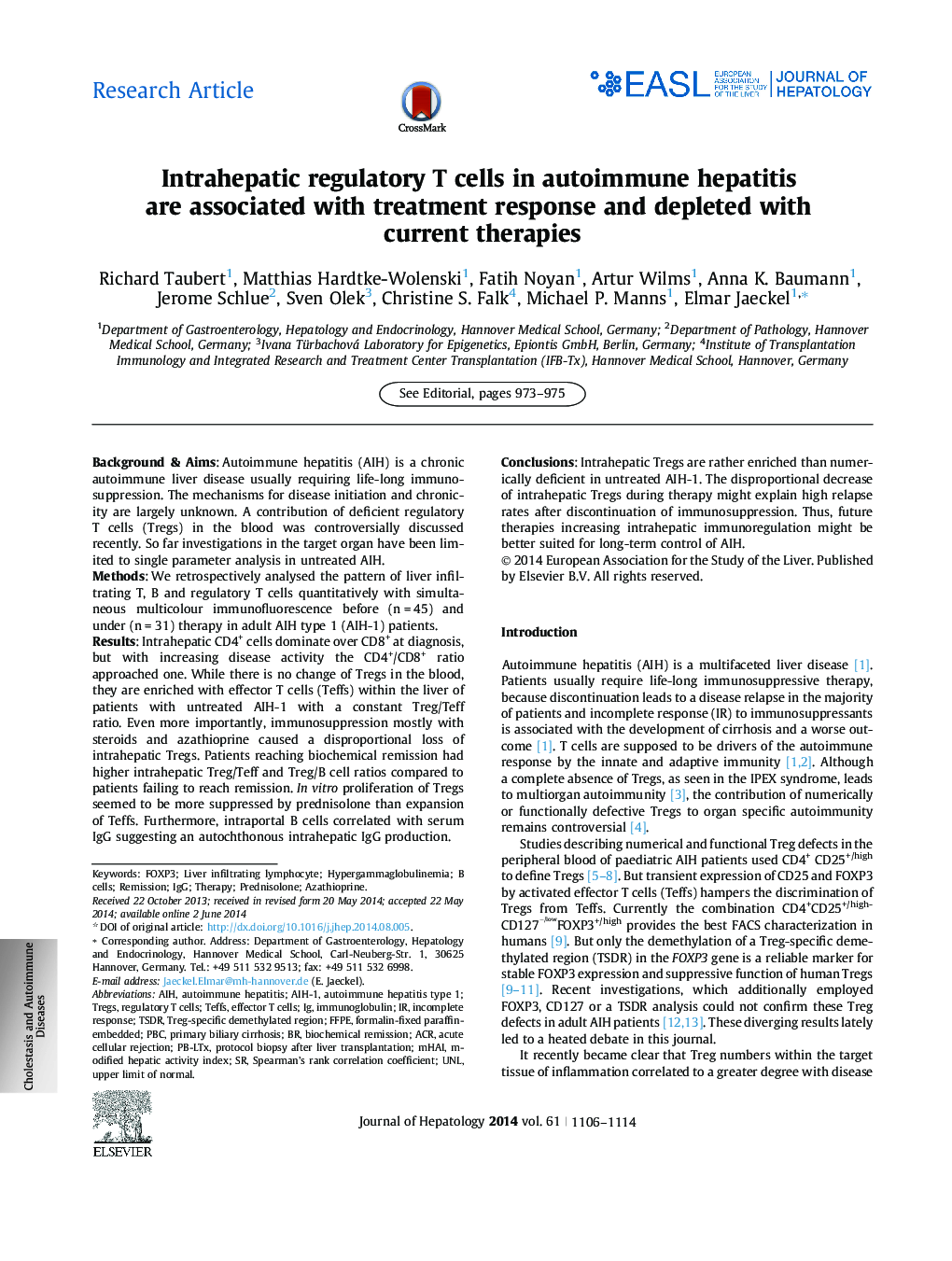| Article ID | Journal | Published Year | Pages | File Type |
|---|---|---|---|---|
| 6103389 | Journal of Hepatology | 2014 | 9 Pages |
Background & AimsAutoimmune hepatitis (AIH) is a chronic autoimmune liver disease usually requiring life-long immunosuppression. The mechanisms for disease initiation and chronicity are largely unknown. A contribution of deficient regulatory T cells (Tregs) in the blood was controversially discussed recently. So far investigations in the target organ have been limited to single parameter analysis in untreated AIH.MethodsWe retrospectively analysed the pattern of liver infiltrating T, B and regulatory T cells quantitatively with simultaneous multicolour immunofluorescence before (n = 45) and under (n = 31) therapy in adult AIH type 1 (AIH-1) patients.ResultsIntrahepatic CD4+ cells dominate over CD8+ at diagnosis, but with increasing disease activity the CD4+/CD8+ ratio approached one. While there is no change of Tregs in the blood, they are enriched with effector T cells (Teffs) within the liver of patients with untreated AIH-1 with a constant Treg/Teff ratio. Even more importantly, immunosuppression mostly with steroids and azathioprine caused a disproportional loss of intrahepatic Tregs. Patients reaching biochemical remission had higher intrahepatic Treg/Teff and Treg/B cell ratios compared to patients failing to reach remission. In vitro proliferation of Tregs seemed to be more suppressed by prednisolone than expansion of Teffs. Furthermore, intraportal B cells correlated with serum IgG suggesting an autochthonous intrahepatic IgG production.ConclusionsIntrahepatic Tregs are rather enriched than numerically deficient in untreated AIH-1. The disproportional decrease of intrahepatic Tregs during therapy might explain high relapse rates after discontinuation of immunosuppression. Thus, future therapies increasing intrahepatic immunoregulation might be better suited for long-term control of AIH.
